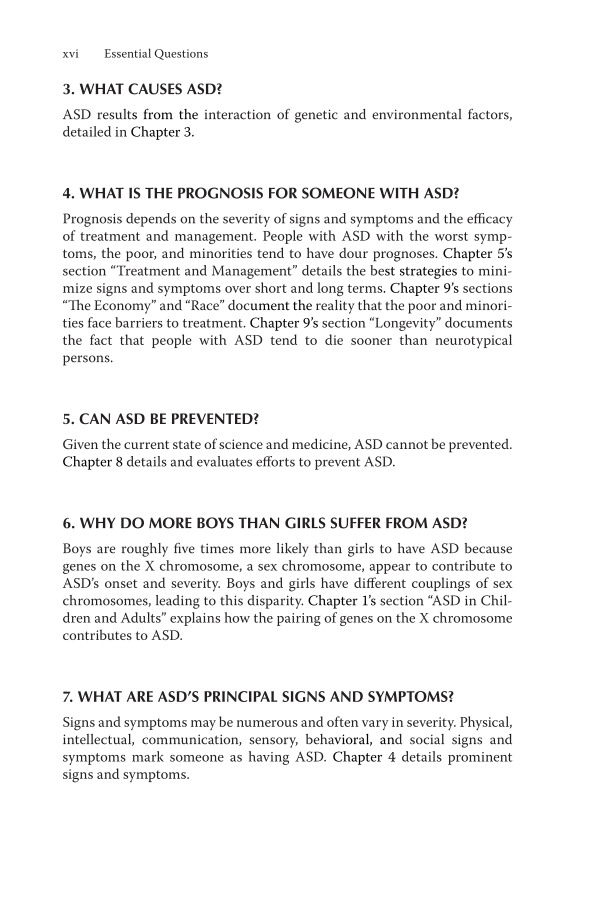xvi Essential Questions 3. WHAT CAUSES ASD? ASD results from the interaction of genetic and environmental factors, detailed in Chapter 3. 4. WHAT IS THE PROGNOSIS FOR SOMEONE WITH ASD? Prognosis depends on the severity of signs and symptoms and the efficacy of treatment and management. People with ASD with the worst symp- toms, the poor, and minorities tend to have dour prognoses. Chapter 5’s section “Treatment and Management” details the best strategies to mini- mize signs and symptoms over short and long terms. Chapter 9’s sections “The Economy” and “Race” document the reality that the poor and minori- ties face barriers to treatment. Chapter 9’s section “Longevity” documents the fact that people with ASD tend to die sooner than neurotypical persons. 5. CAN ASD BE PREVENTED? Given the current state of science and medicine, ASD cannot be prevented. Chapter 8 details and evaluates efforts to prevent ASD. 6. WHY DO MORE BOYS THAN GIRLS SUFFER FROM ASD? Boys are roughly five times more likely than girls to have ASD because genes on the X chromosome, a sex chromosome, appear to contribute to ASD’s onset and severity. Boys and girls have different couplings of sex chromosomes, leading to this disparity. Chapter 1’s section “ASD in Chil- dren and Adults” explains how the pairing of genes on the X chromosome contributes to ASD. 7. WHAT ARE ASD’S PRINCIPAL SIGNS AND SYMPTOMS? Signs and symptoms may be numerous and often vary in severity. Physical, intellectual, communication, sensory, behavioral, and social signs and symptoms mark someone as having ASD. Chapter 4 details prominent signs and symptoms.
Document Details My Account Print multiple pages
Print
You have printed 0 times in the last 24 hours.
Your print count will reset on at .
You may print 0 more time(s) before then.
You may print a maximum of 0 pages at a time.




















































































































































































